Do you plan to visit Saint Petersburg? If yes, you are in the right place, because we have a few tips for you to find interesting places to go! I visited St. Petersburg in 2018 (unfortunately without Míša), and how else than by bus. Míša and I took a bus around the Scandinavian countries, we have been on a 19 hour bus ride on the way to Great Britain and even those 18 hours on an excursion to the city of Nantes, still during my student years, were not so terrible. You can get around Europe by bus almost anywhere.
Road to Russia
The journey from Prague was long, but it passed better thanks to beautiful stops, first in Latvia and then in Estonia. Beautiful countries that are definitely worth a visit, but the “highlight” was our final destination – Saint Petersburg in Russia.
The first shock came on the border with Russia. We were the only ones there, so I expected the control to be pretty quick, but it was the opposite. The Narva-Ivangorod border crossing was not the most pleasant. After all, being in the same place for 3 hours without seeing the end kinda sucks. I don’t even know what they were searching anymore, but they searched the bus through in and out and the passport / visa control of all the people on the bus was also very lengthy. Everyone had a visa in their tack (today only electronic is enough), and fortunately no one thought of smuggling heroin, so we were finally able to enter the country.

In 2018, during my studies I was still earning a living as a part-time worker in an unnamed clothing store on Wenceslas Square, and the number of Russian citizens I came in contact with was high. They couldn’t speak Czech, they couldn’t speak English either, and they just showed what they wanted with a grumpy “superior” face. They loved Adidas tracksuits (yes, the stereotype is true) and they didn’t want to try on the 5 pairs of shoes they took. So why am I telling you this? I was looking forward to the “real” Russia. And I got what I wanted right when crossing the border.
Broken roads, cars I was amazed they can be driven at all, dilapidated houses held together by the magic of Harry Potter,…. And people looked happy, smiling. After such experiences, I always ask myself what we really need for life and what makes us happy. However, we continued on to the beautiful Saint Petersburg.
Saint Petersburg and surroundings
Right at the entrance to Saint Petersburg, you can see the difference between large Russian cities and small ones. Especially when it comes to the wealth of their inhabitants and it is clear where the money from the state budget actually goes. Beautiful new apartments, the road had perhaps 4 lanes in one direction and the huge skyscraper of Gazprom was unmissable.
We arrived at our hotel with a nice name Sputnik and we went to explore the beauties of Saint Petersburg and its surroundings.
If you do not yet have an airbnb profile, you can take advantage of a 27,5 euro discount on your first accommodation by clicking on THIS link.
A metro ticket in Saint Petersburg costs about 55 rubles (= 60 cents) and a bus ticket is 5 rubles cheaper. Of course, my list of things you should visit is not complete, one cannot see everything in those few days. So I would like to introduce you to a few places I have visited and that I think are worth a visit.
Hermitage Museum
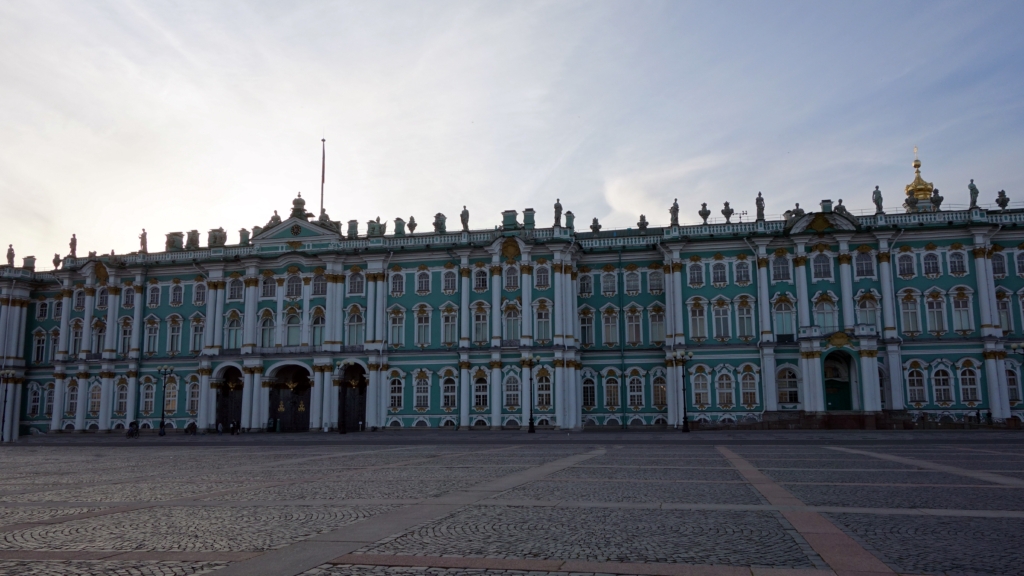
What does that actually mean? The Hermitage is a museum of art and culture. It is the second largest art museum in the world, founded in 1764, when Empress Catherine the Great acquired an impressive collection of paintings by the Berlin merchant Johann Ernst Gotzkowski. The museum annually on December 7, on the day of St. Catherine, celebrates the anniversary of its founding. It has been open to the public since 1852. In 2019, it attracted 4,956,524 visitors, which ranks it 8th among the most visited museums of its kind.
Museum collections, of which only a small part are permanently exhibited, contain more than three million items, including the largest collection of paintings in the world. The collections occupy a large complex of six historic buildings along the waterfront of the palace, including the Winter Palace, the former seat of Russian emperors. In addition to them, the museum also includes the Menshikov Palace, the Porcelain Museum, the Staraya Derevnya Warehouse and the east wing of the General Staff Building. The museum has several exhibition centers abroad.

The ticket for foreign tourists costs more than the fee paid by citizens of Russia and Belarus. The entrance for individual visitors is located in the Winter Palace, which is accessible from the courtyard. If you book a ticket online, the current price (January 2021) is 500 rubles (= about 5,7 euros).
Admission is free on the third Thursday of each month for all visitors. It is also free every day for students and children. The museum is closed on Mondays.
Church of the Savior on Blood

A former Russian Orthodox church that currently functions as a museum. The building was built between 1883 and 1907. It is one of the main attractions of Saint Petersburg. The church was built on the same place where the political nihilists assassinated Emperor Alexander II. in March 1881.
The church was financed by the imperial family of the Romanovs (his son Alexander III) in honor of Alexander II. And the suffix “Savior on Blood” refers to his assassination. Unfortunately, it was just under reconstruction at the time of my visit, but I still enjoyed this beautiful church in Neo-Russian style.
Peter and Paul Fortress

The original citadel of Saint Petersburg, Russia, founded by Peter the Great in 1703 and built according to the designs of Domenico Trezzini as a bastion fortress (in the shape of a star). From the first half of the 17th century to the early 1920s, it served as a prison for political criminals. It has been operating as a museum since 1924. Today it has been adapted as a central and most important part of the State Museum of the History of Saint Petersburg.
The fortress contains several remarkable buildings grouped around the Cathedral of Peter and Paul. It has a bell tower 122.5 m high (the highest in the city center) and a gilded dome with an angelic peak. The cathedral is the burial place of all Russian tsars from Peter I to Nicholas II.
Other buildings inside the fortress include the Grand Ducal funeral vault, the still functioning building of the Saint Petersburg Mint, the Trubetskoy bastion with gloomy prison cells and the already mentioned State Museum of Saint Petersburg History.
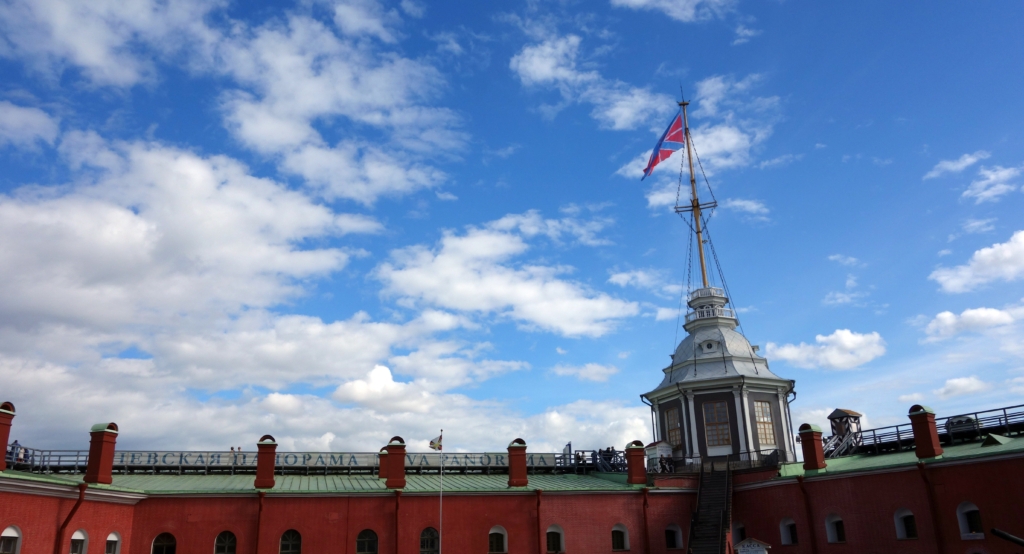
The annual celebrations of City Day (May 27) are usually held here. The walls of the fortress are lined with sandy beaches, which have become the most popular in Saint Petersburg. In summer, the beach is often crowded, especially when festivals take place on the coast.
According to centuries-old tradition, a cannon from Naryshkin’s bastion is fired every noon. The honorary inhabitants and famous guests of the city sometimes have the right to fire the traditional noon “explosion”.
St. Petersburg subway
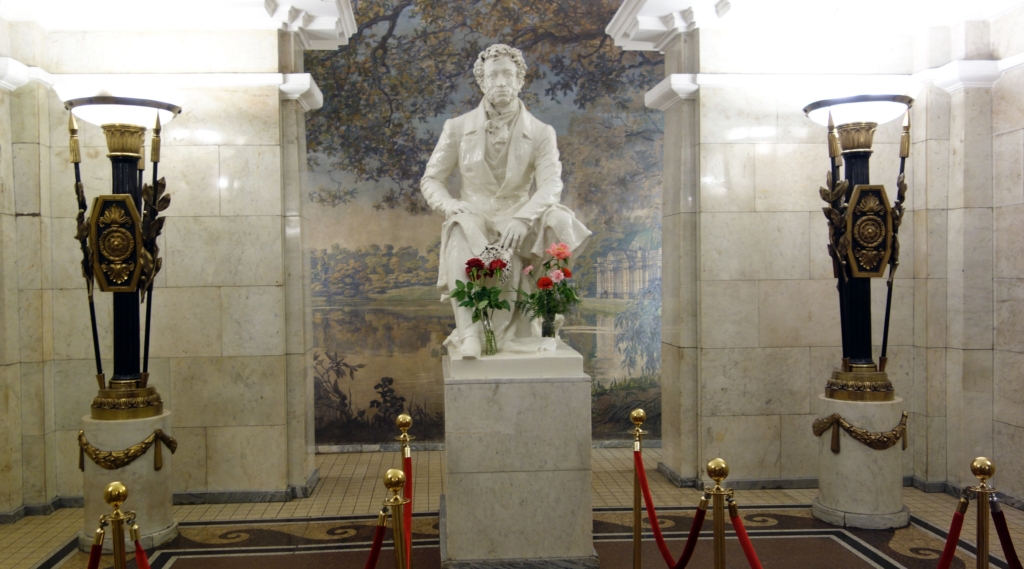
Construction of the subway began in 1941, but construction had to be suspended due to World War II and the siege of Leningrad (now St. Petersburg). At this time, stations were used as a shelter from bomb attacks. The subway was finally inaugurated on November 15, 1955.
The metro is decorated with typical Soviet motifs, decorations and works of art. Thanks to this, it is considered one of the most attractive and elegant subways in the world. In addition, the St. Petersburg subway has one of the deepest systems in the world and even take the first place as a city with the deepest average length of all stations. Admiralteyskaya Station is the deepest and is located 86 meters underground.
Smolny Convent
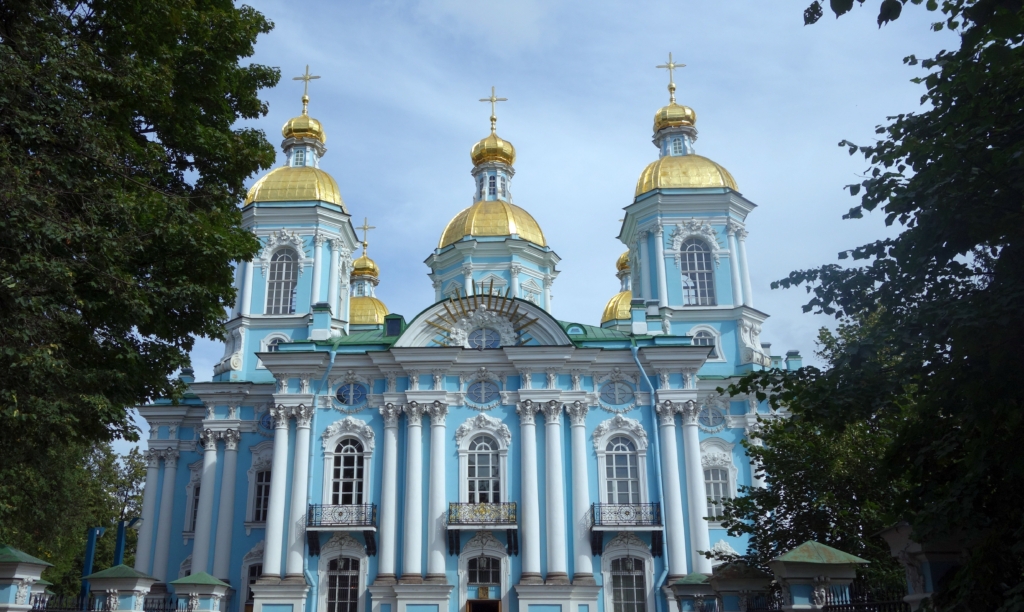
The Smolny Convent is located on the left bank of the Neva River and consists of a cathedral and a complex of buildings, originally planned as a monastery.
This Orthodox monastery was built as a seat for Elizabeth, the daughter of Peter the Great. After being denied accession to the throne, she decided to become a nun. However Its imperial predecessor Ivan VI. was overthrown during a coup (carried out by the royal guards in 1741). Elizabeth then decided not to enter the monastic life and accepted the offer of the Russian throne.

The projected bell tower was to become the tallest building in St. Petersburg and at that time also the tallest building in all of Russia. Due to Elisabeth’s death, this grand project was not completed.
Russian cruiser – Aurora
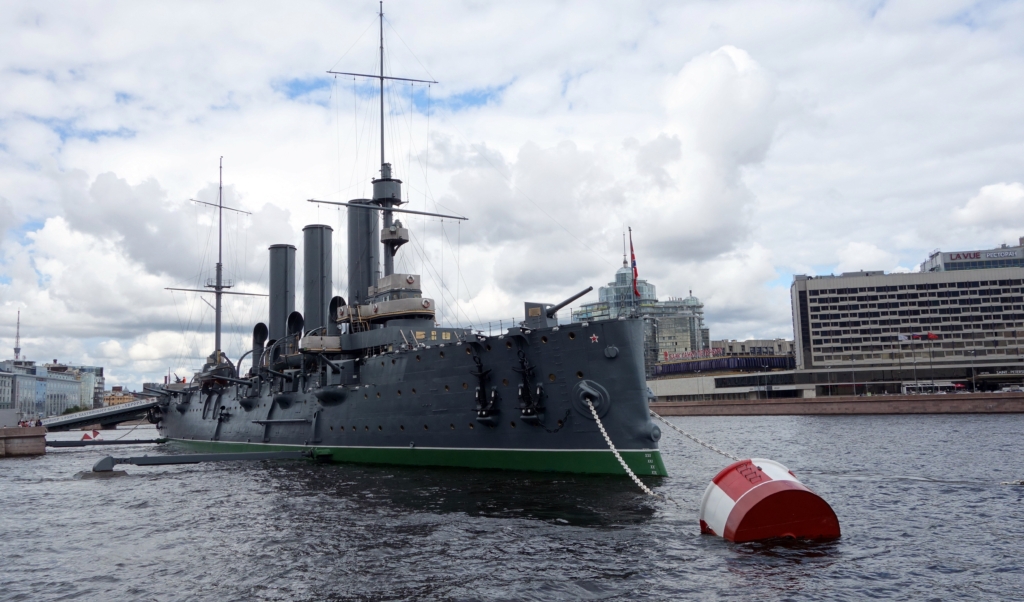
Russian protected cruiser from 1900, which is currently preserved as a ship-museum. Aurora was one of three Pallada-class cruisers built in St. Petersburg for a service in the Pacific.
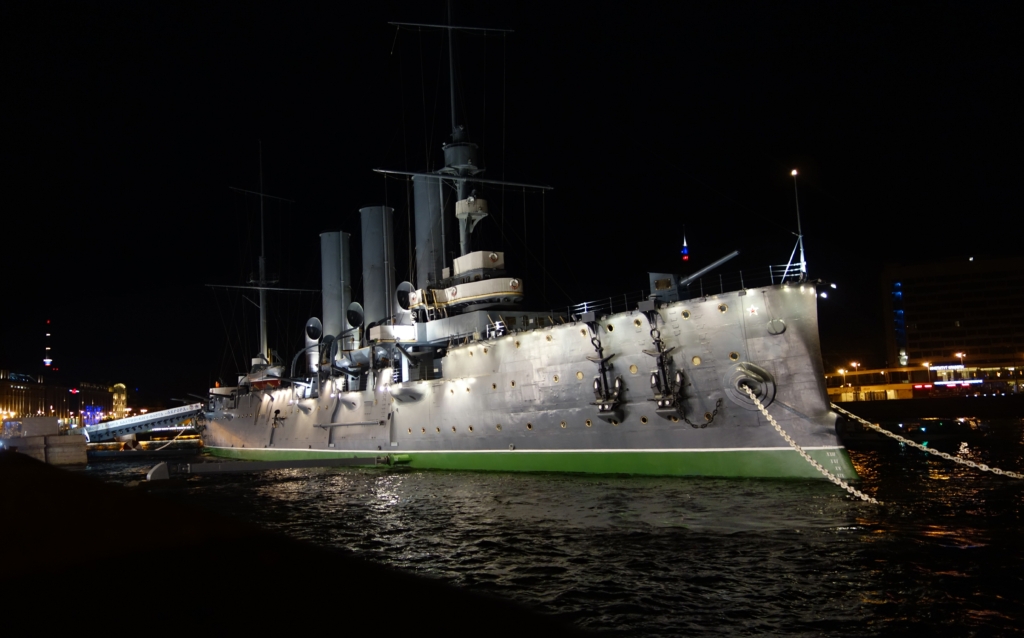
All three ships of this class served during the Russo-Japanese War. Aurora survived the Battle of Cusima and was interned under US protection in the Philippines until she eventually returned to the Baltic Fleet.
Mariinsky Theatre

It is a historical theater of opera and ballet. It was opened in 1860 and became the most important musical theater in Russia at the end of the 19th century. A number of theatrical works by Tchaikovsky, Mussorgsky and Rimsky-Korsakov had their premiere here.
If you are you would like to visit the theatre you can buy tickets at: https://www.mariinsky.ru/en/
Tickets for “La Bohème” by the author Giacomo Puccini, for example, cost from 10 euros to 38 euros. They are affordable, worth a visit 🙂 .
Saint Isaac’s Cathedral
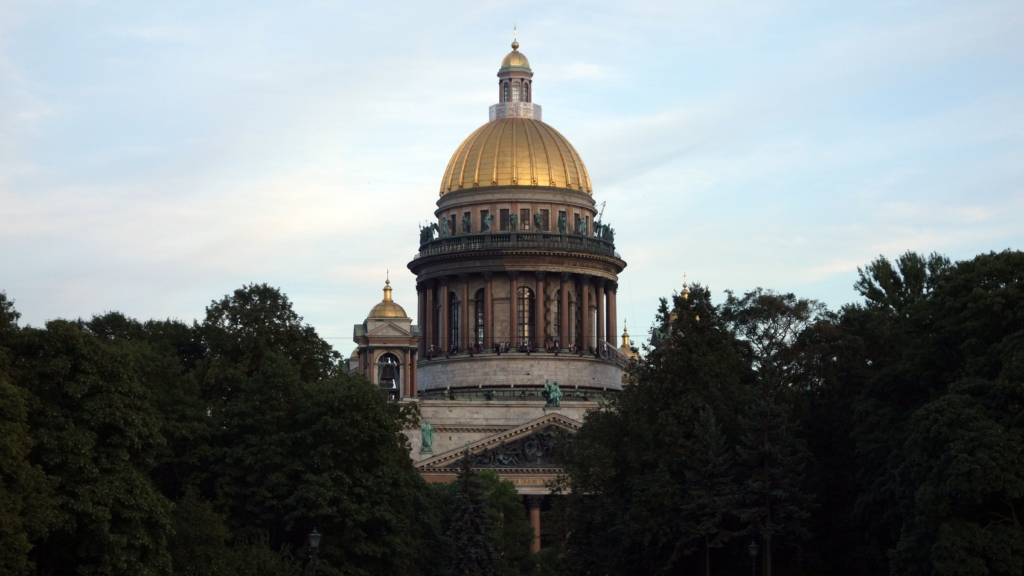
The cathedral currently functions as a museum with occasional church services. It is dedicated to St. Isaac of Dalmatia, the patron saint of Peter the Great, who was born on the feast of this saint. It was originally built as a cathedral, but in 1931 it was transformed into a museum by the Soviet government and has remained a museum ever since.
In 2017, the governor of St. Petersburg offered to transfer the cathedral back to the Russian Orthodox Church, but this was not achieved due to protests by the citizens of St. Petersburg, who were against it.
Catherine Palace

It is a Rococo palace, situated 30 km south of St. Petersburg, which used to be the summer residence of the Russian tsars. The construction of the summer residence began in 1717, at the instigation of the wife of Tsar Peter the Great, Catherine I of Russia.
The original building was almost completely demolished, and in 1752 a massive reconstruction in the Rococo style began. Further major damage was caused by German troops during World War II.

It was not until 2003 that the reconstruction was completed, which restored the palace to its old glory. Very famous is the so-called Amber Room, which has been located in the castle since the 1840s. However, few people know that in 1942 she was transferred to Germany and then lost. Therefore, a replica of it has been located in the Catherine Palace since 2003. The rooms are mostly Empire style, and the ubiquity of gold and wealth is evident in every room.
Admission is free for people under 18 and 6 euros for others. Entrance to the gardens is paid separately – 1,7 euros.
Peterhof Palace

There are, in fact, several palaces and gardens located in the city of Petergof, which Peter the Great commissioned as a direct response to the Palace of Versailles built by King Louis XIV of France.
Peter the Great, originally intended to live in the countryside in 1709, sought to expand the property as a result of his visit to the French royal court in 1717. The palace complex, together with the city center, is considered a UNESCO World Heritage Site.
The “purpose” of Peterhof Palace was to celebrate the right to access the Baltic Sea after winning the battle over the Swedes (at the same time Peter the Great also expanded the territory on the Black Sea coastal area). The palace thus celebrates the expansion of its territory and the modernisation of Russia.

Peterhof was significantly damaged and valuables stolen by German soldiers during World War II. The restoration lasted the entire second half of the 20th century and today it has been repaired to its original glory. One of the main attractions are the amazing fountains created by the architect Mikhail Kozlovsky, and if you are lucky you can look forward to a beautiful water show (if you see something over the thousands of people).
Admission for people with Russian citizenship and people from the EU is currently 400 rubles (= about 4,5 euros).

I sincerely hope that you liked the article and when you visit St. Petersburg, be sure to taste the local Borscht and Pelmeni (whether cooked or fried).
We tried to find you the current entrance fee to the monuments, which has decreased so much since the time of my visit (probably due to the Covid) – so you can expect it to rise again.


The best hidden gems in Paris, France
Traveling to North Macedonia, places to see and trips
Last Updated on March 11, 2021 by Míša










